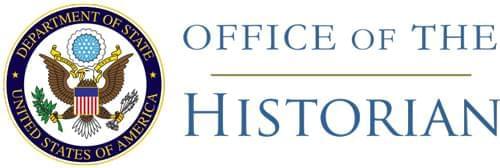863.51 Relief Credits/28: Telegram
The Minister in Austria (Washburn) to the Secretary of State
Vienna, February 15,
1928—10 a.m.
[Received 8:45 p.m.]
[Received 8:45 p.m.]
9. As responsive to Department’s telegram 10, February 3, 6 p.m.,18 the Austrian Government requests me to transmit the following translation of statement prepared by it, to wit,
- 1.
- Communication is the nerve of Austrian economics. Of the one thousand million schillings deficit of the trade balance, about six hundred millions are covered by transit, foreign trade commissions and tourist traffic. Since the war the urgent investments for means of communication could not be made to the necessary extent. Economic management of the railroads requires admissible axle pressure of from 18 to 20 tons, while at present even on the principal lines often only fourteen and one half to sixteen tons of axle pressure is possible. Hitherto only about twenty-five per cent of the length of rail has been furnished with strong superstructure and this chiefly on the lines electrified by means of contributions from the League” of Nations loan. Requirements for traffic at least forty per cent. On nearly half of the total rail length there still exist about fifty different old fashioned rail systems so that the management is still uneconomic, especially as regards the necessity of dividing trains, increased requirement of engines, coal and staff, smaller signals, restriction of free disposals of engines, expressive maintenance of the superstructure and accessories of traffic.
- 2.
- Because of the war and the distribution of the rolling stock to the succession states the rolling stock is about two-thirds old fashioned and is no longer sufficient, the repairs in consequence being expensive and uneconomic (on the average, costs of maintenance are fifty per cent higher than in peace time) and management uneconomic (limitation of speed, slower circulation of cars and therefore greater requirements of cars). All freight cars are furnished only with hand brakes; [there is] necessity therefore of introducing automatic brakes for the whole freight rolling stock. Reasons: hand brakes require numerous personnel, especially on mountain lines which are frequent in Austria. Automatic brakes require no personnel for service. Hand brakes mean slower speed and therefore greater requirement of rolling stock and staff. Finally, difficulties with neighboring states which have introduced the automatic brakes.
- 3.
- Federal railways now intend in the first place to bring the railway lines and rolling stock up to date more quickly than hitherto and therefore wish first to postpone the electrification of the line Salzburg-Vienna planned some time ago. The modernization above described pays very well while the electrification, because of the present very low price of coal (twenty schillings per metric ton normal coal of forty-four hundred calories), is not sure to pay so well.
- 4.
- The present new investment plan for the railways: for electrification second (Salzburg-Buchs nearly completed), instead of twenty million schillings, fifty million schillings (see exhibit number 4, my despatch number 1704, February third). Electrification third, Salzburg-Vienna, is left out of revised program. Other investments: For railways, instead of 234,000,000 schillings, 364,000,000 schillings. For rails, machines, bridges and other railway constructions 131,000,000 schillings. For rolling stock 163,000,000 schillings. For automatic freight train brakes 70,000,000 schillings. Besides these investments calculated to enhance the value of the railways, the normal renewal and spare parts purchases will continue to be covered from the current receipts.
- 5.
- Annual report of the Federal Railways for 1926 now ready. Austrian deficit, because of notoriously unfavorable European traffic year, nine and a half million schillings. In 1927 probably no deficit. Appropriation of 26,400,000 schillings to Federal Railways in the budget for the year 1928 appears in this budget in the same amount also on the receipt side, and is therefore only a current [balancing?] item (formal reason: participation of Federation in gross traffic receipts by a 5 per cent traffic tax).
- 6.
- Austrian Post, Telegraph and Telephone Administration had no deficit in 1927 but a surplus of about 200,000 schillings. Similar results to be expected for 1928. This situation as in the case of the railways results after the full inclusion of all expenditure for interest and amortization of approximately 80,000,000 schillings appearing in 1927 budget, representing sums hitherto allocated from League of Nations loan for investment purposes. For the line Passau-Vienna, 16,000,000 schillings short-term credit was used. Of this sum in the first year 4,200,000 schillings were paid back and the clear profits obtained on these lines which shows that they pay exceedingly well. The construction of further long-distance cable lines [is] necessary in order to meet urgent requirements of traffic and to avoid the danger that the cable lines of neighboring countries will be utilized in international communication to the exclusion of Austrian lines. Only such lines will be established as are sure to pay. Redrafting investment plan for long distance cables, the costs for the improvement of the domestic Austrian telephone plants necessitated by the increase of traffic are of course included.
- 7.
- The investments planned for “other lines” concern a negligible participation of the state in the costs of the urgently necessary construction of the two new local lines and the purchase of motor engine cars for the local lines, guaranteed by the state but which have little traffic. Experience shows that the use of electric motor engine cars on such lines always pays well.
- 8.
- Data on the investments for tobacco, administration proper, monopolies and other undertakings are not given because according [Page 879] to the resolution of the control committee the investment loan may only be used for railway and post purposes. Please give a copy to Prochnik.
Washburn
